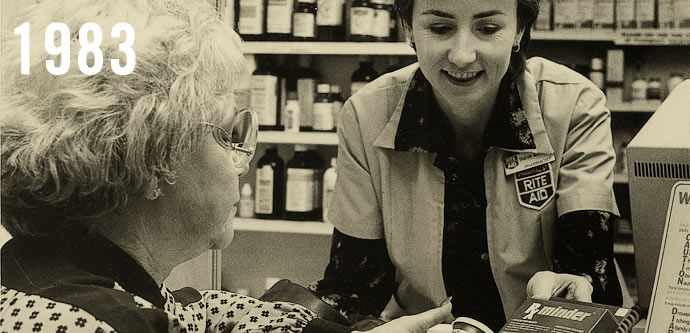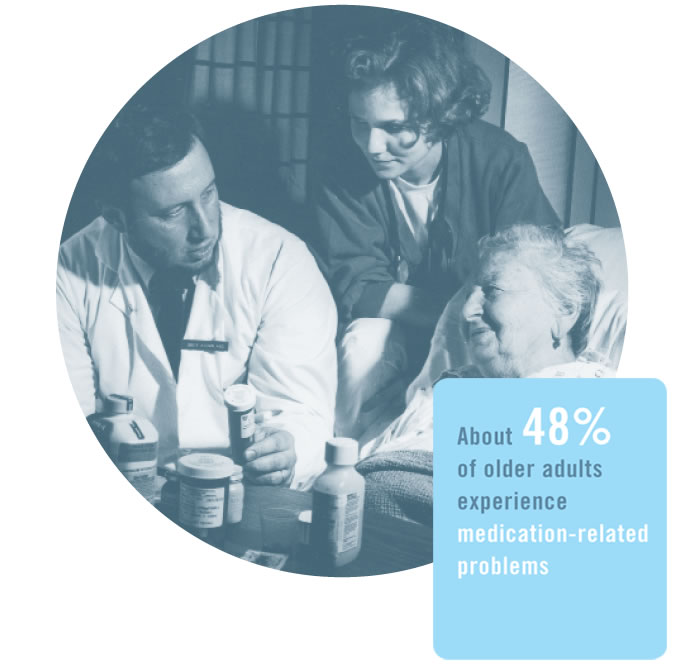ADDRESSING THE NEEDS OF OLDER ADULTS

Geriatric Pharmacology
1983-2001 Older adults are the largest consumers of prescription drugs with more than 40 percent of adults over age 65 taking five or more medications. Older adults metabolize drugs differently than younger people, they are more susceptible to side effects, and their multiple medications can lead to dangerous interactions.
Sixteen Foundation grants, worth over $7 million, helped to pioneer the field of geriatric pharmacology. Initiatives included the development of the Beers Criteria for Potentially Inappropriate Medication Use in Older Adults and programs to address geriatric safety issues in drug development, dispensing in nursing homes, and using home health care and social service professionals to reduce medication errors.
Grants to Vanderbilt University in partnership with the Visiting Nurse Service of New York and Visiting Nurse Association of Greater Los Angeles tested and proved the effectiveness of a model for home health and social service agencies to help older adults manage medications.
The Beers Criteria, which were updated in 2012, are widely used in medical practice today, keeping older adults safe from harmful medications.
The grants to Vanderbilt University led to implementation by the Partners in Care Foundation in California, which later incorporated health information technology to identify and correct medication issues through its successful HomeMeds program (Preventing Medication Errors).
(Top) A grant to the University of Florida, Gainesville, helped community pharmacists assist older patients and physicians monitor medication use.(Below) With a grant to Boston’s Beth Israel Hospital, Jerome Avorn, MD, directed a program to reduce medication problems of nursing home residents by educating patients and staff.
